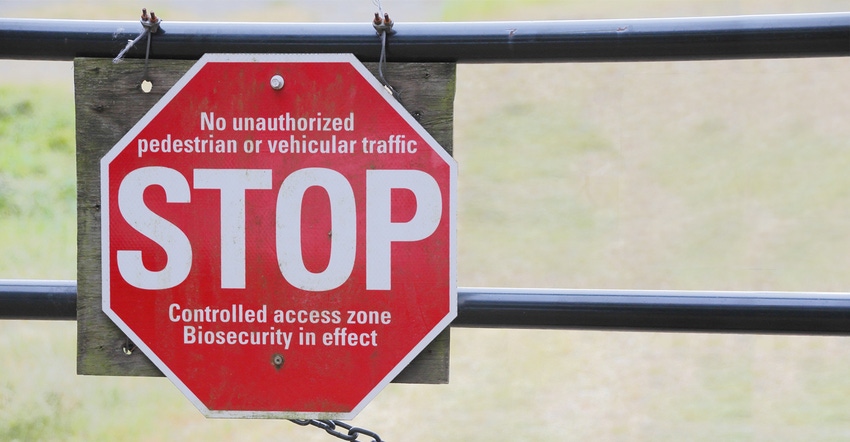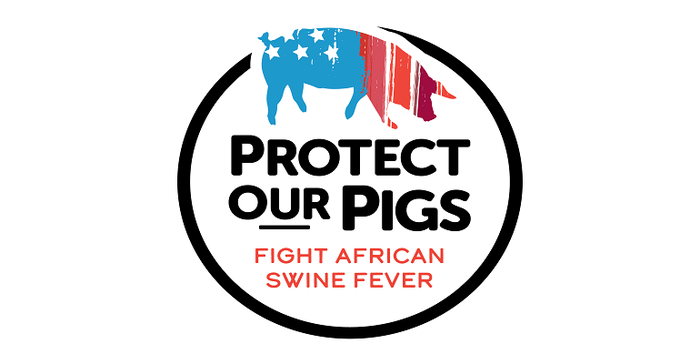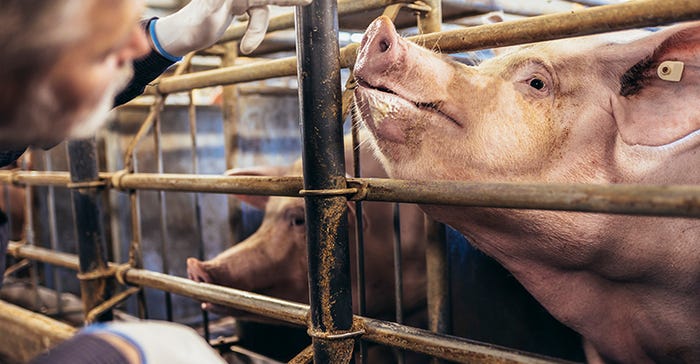African swine fever is spreading: know the signs to protect your pigs
Protecting our pigs from African swine fever requires that we all stay vigilant, stay safe, and stay informed.
October 1, 2022

Sponsored Content
African swine fever is a contagious and deadly virus that’s infecting pigs around the world. The disease hasn’t reached the United States, at least not yet. But in recent months, the disease has continued to spread into new areas in Western Europe and Asia. Last year, it was detected in the Dominican Republic—less than 60 nautical miles from Puerto Rico—and then next door in Haiti.
While harmless to humans, the virus that causes African swine fever can be present in foods made from pork. People can spread the disease by bringing pork or pork products, which may contain the virus, with them when they travel from a country where it exists. They can also introduce it to farms in other ways. For example, people can carry the pathogen on clothing, shoes, equipment, vehicles, or other materials and unknowingly bring it to your farm.
If it does reach the United States, an outbreak would hit the nation’s farmers, food supply, and economy. “It’s a devasting economic disease,” notes Jack Shere, associate administrator of USDA Animal and Plant Health Inspection Service (APHIS).
African swine fever is not a threat to human health nor is it a food safety concern, but it will kill millions of pigs that Americans rely on for food and trade. This would create pork shortages and increase food prices. It’s predicted to cost the nation $15 billion over two years alone and could cause thousands of workers to lose their jobs if the disease breaches U.S. borders.
USDA: Be vigilant
That’s why it’s important that domestic pork producers be vigilant about a disease they have not yet seen. Being prepared is the best defense if African swine fever hits. Once it’s detected, it can spread quickly.

Through its Protect Our Pigs campaign, USDA is raising awareness of African swine fever to help producers and veterinarians quickly find and share actionable information to defend their herds and livelihoods. Get the latest biosecurity best practices and control measures at the Protect Our Pigs website, as well as free resources like custom videos, downloadable materials such as biosecurity action plans, and interactive training guides that help educate and train your workers and visitors.
Know the signs to protect our swine
Currently, there is no vaccine for African swine fever, which has a mortality rate of nearly 100 percent. The signs of African swine fever infection can look like those of other less deadly diseases that you may commonly see in production settings.
That’s why it’s critical for farmers, producers, and veterinarians to be alert for any of these signs:
High fever
Decreased appetite and weakness/atypical production
Red, blotchy skin, or skin lesions
Diarrhea and vomiting
Coughing and difficulty breathing
Abortions or sudden death
If you see any signs, immediately report them to state or federal animal health officials or call USDA for appropriate testing and investigation at 1-866-536-7593.

How African swine fever spreads
Transmission can occur in a variety of ways and producers need to be aware of the different ways African swine fever can spread:
Direct contact occurs when healthy pigs have contact with infected domestic or wild swine or come in contact with infected saliva, urine, feces, or aerosolized respiratory secretions via coughing or sneezing.
Indirect transmission happens when healthy pigs eat virus-contaminated feed or pork products, or come into contact with the virus on clothing, shoes, equipment, vehicles, or food waste.
Insect-borne transmission occurs when a soft tick acts as a vector, feeding on infected pigs and spreading the virus to healthy swine. Other insects like stable flies, leeches, and swine lice may also spread it.
Learn about biosecurity best practices and control measures and find more information about African swine fever, including resources for producers, veterinarians, and international travelers at Protect Our Pigs. It’s a matter of livelihood and death.
About the Author(s)
You May Also Like



